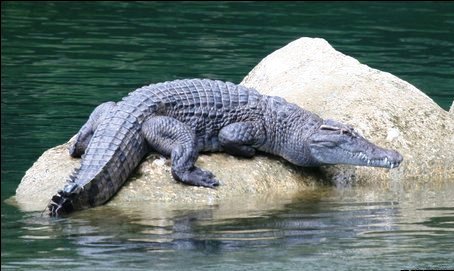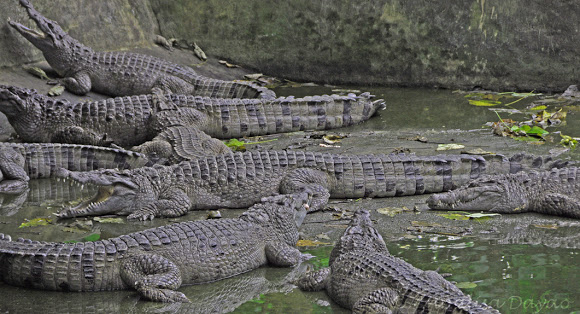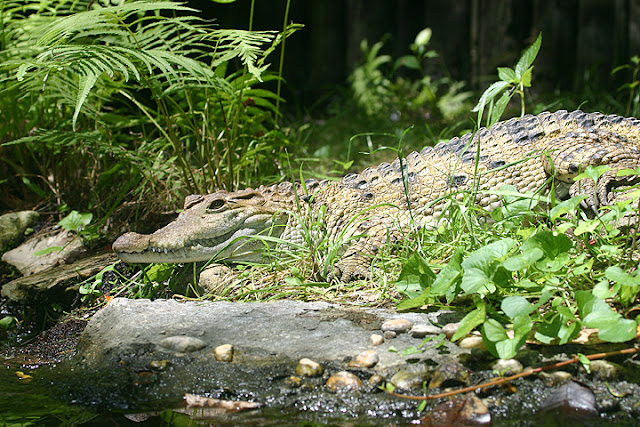The Philippine crocodile ( Crocodylus mindorensis ) is a kind of genuine crocodile (Crocodylidae). Compared to all the other crocodiles in the Pacific area is characterized by the Philippine crocodile from a very broad muzzle that is reinforced with up to 68 teeth, and large armored scales in the neck and back area.
With a maximum of three meters body length in males expemplary it one of the smaller species of crocodile. The females of this species are small, up to 1.5 meters and up to 15 kg body weight. The behavior of the Philippine crocodile is described as shy and harmless to humans, only provocations react aggressively.
With a maximum of three meters body length in males expemplary it one of the smaller species of crocodile. The females of this species are small, up to 1.5 meters and up to 15 kg body weight. The behavior of the Philippine crocodile is described as shy and harmless to humans, only provocations react aggressively.
The Philippine crocodile lives in freshwater, such as rivers, small lakes and marsh areas. It is in its distribution restricted to individual islands of Philippines. In historical times, the animals came to the islands Luzon, Mindoro, Masbate, Samar, Negros, Busuanga and Mindanao before.
His current areas of distribution are limited to the Agusan Marsh, the Ligawasan marshes and the headwaters of the Pulangi in the province of Bukidnon on the Island of Mindanao. On the island of Luzon is one of Northern Sierra Madre Natural Park and areas in Abra province along the river Binungan to its present habitat.
Like most other crocodiles, the Philippine crocodile feeding of very different organisms from the water. Its range of services includes probably snakes, frogs, turtles, insects and small mammals, however, is not known accurately. The ratio between males to females within the population is usually 1:1.
The mating period varies depending upon the area of distribution, but is generally in the months of January to May. Especially at dawn between 4 to 7 clock, the procedure lasting up to 30 minutes can be observed, which takes place in the water.
A week before the females laying eggs build a mound nest of sand plant materials in which they are isolated from 7 to 25 eggs. The incubation period is about 12 weeks. A guard over the nest and brood care were observed.
~~~
~~~


No comments:
Post a Comment